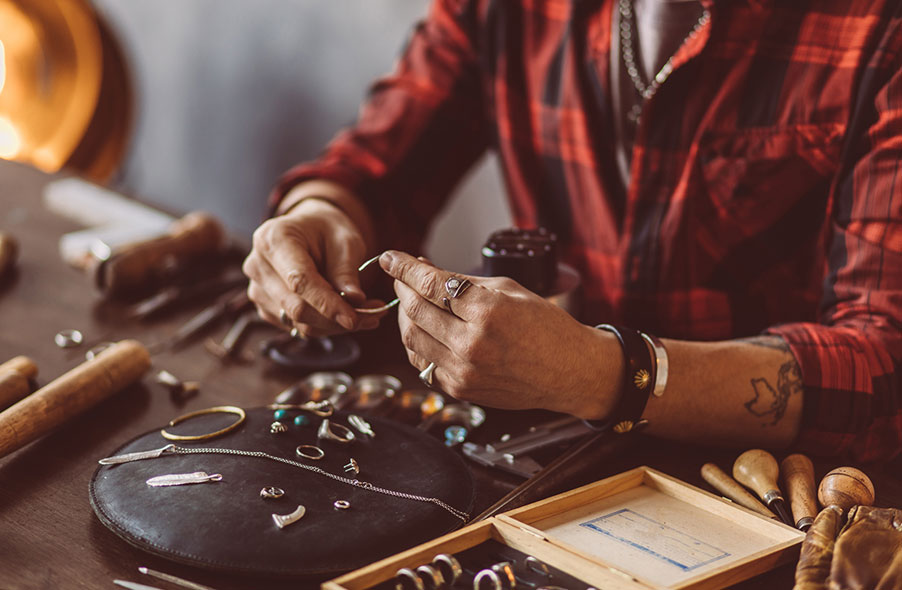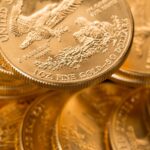Wondering whether that gold coin or ring you bought is real or fake? Counterfeit gold can look just like the real thing, so it’s not as easy to tell as you might think.
Below, you’ll learn how to tell if gold is real with a few tests you can do at home.
What Is Gold?
Gold is a dense, lustrous precious metal with the chemical element Au. Gold has appealed to people for thousands of years because it’s beautiful, durable, and easy to work with. Plus, unlike other materials, it doesn’t rust or tarnish and is an excellent conductor of heat and electricity. Australia, China, Russia, and Canada account for most of the world’s gold production today.
Hallmarks and Purity
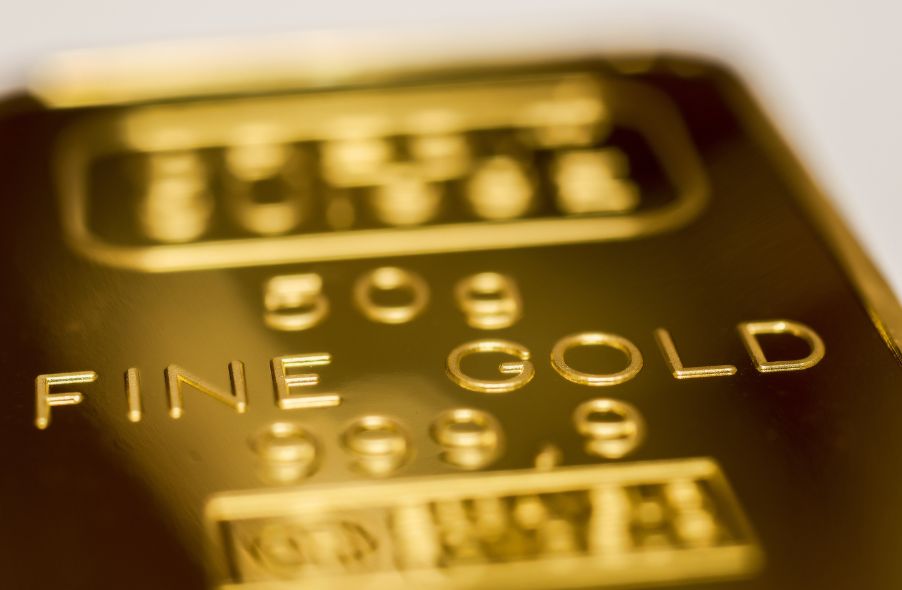
If you’re wondering how to tell if gold is real, one of the easiest ways is to look for hallmarks indicating an item’s authenticity. These stamps will vary depending on the manufacturer, but they’ll describe the gold content in millesimal fineness or karats.
For gold coins and bars, look for hallmarks on one of the sides. Gold jewelry, such as bracelets and rings, usually has hallmarks concealed on the piece’s interior (i.e., the part that sits against your skin).
If the manufacturer of your item uses the millesimal fineness system, look for one of the following purity numbers:
- 333
- 375
- 417
- 583
- 585
- 625
- 650
- 833
- 875
- 916
- 958
- 999
If the manufacturer uses the karat system, look for a number with a “K” after it, such as 8K, 14K, or 24K. The higher the number, the purer the gold.
Note that this test isn’t fully accurate because counterfeiters have become increasingly good at engraving pieces with convincing-looking fake numbers.
Physical Tests
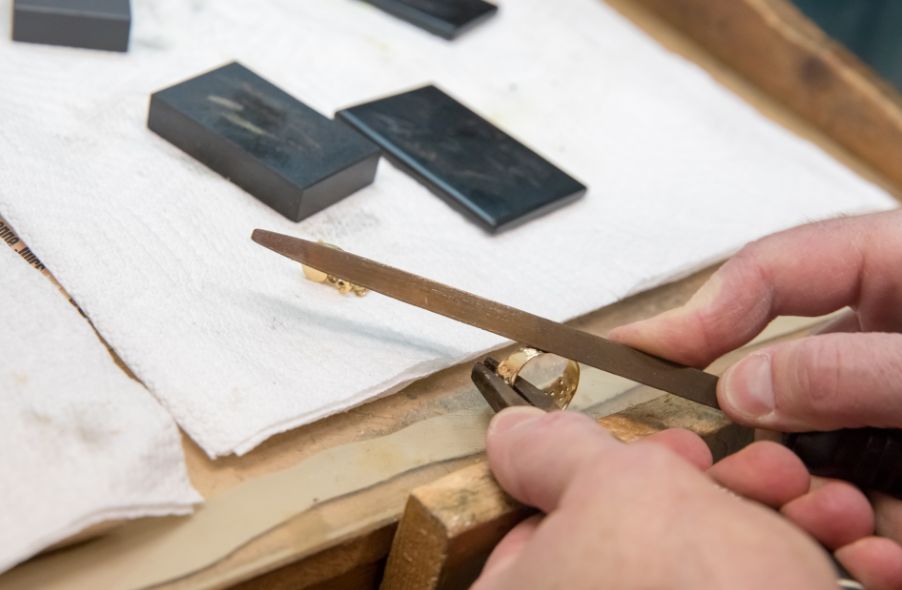
If your item has no hallmarks and you’re wondering how to tell if unmarked gold is real, here are a few physical tests you can try.
The Magnet Test
Gold is not magnetic, so if your item reacts when holding a magnet over it, you may have fake gold. Regular kitchen magnets usually aren’t strong enough for this test, so you might need to buy another type of magnet, such as neodymium.
This test isn’t perfect because counterfeiters may mix fake gold with other non-reactive metals, such as stainless steel. Combining this test with a few others is best for the most accurate results, as not every test will be enough on its own.
The Water Test
Gold is too dense to float, so it should sink to the bottom when you drop it into a glass of water. If your item floats, it’s probably counterfeit.
Another test is to look for signs of tarnishing or rusting. Real gold doesn’t tarnish after getting wet.
You can also use water to check an item’s density. For this test, you’ll need a scale to weigh the item, a container of water, and a way to measure the water level in milligrams.
Here’s how to tell if gold is real with this test:
- Measure your item’s weight in grams.
- Measure the water level in milligrams.
- Place the item into the container of water, then measure the water level again.
- Subtract the “before” measurement from the “after” measurement.
- Divide the weight of your item by the difference in water levels.
Real gold weighs about 19.3 grams per milliliter. If your figure comes close, you’re probably holding the real thing.
The Skin Test
Of all the gold testing methods, the skin test is one of the easiest. Real gold doesn’t react with sweat or the oils on your skin. If you hold an item for a few minutes and it leaves marks on your skin, it’s probably not real. Silver items leave gray or black marks, while marks from copper jewelry are green.
You can also use liquid foundation to test an item’s purity. Simply rub a thin layer of foundation on your skin and wait for it to dry, then press the item against it. If the item leaves black marks on the foundation, it may be counterfeit.
Keep in mind that some manufacturers blend real gold with other metals, so you may still see marks on your skin even if the product is authentic.
The Sound Test
The sound test is another simple way to tell real gold apart from the fake stuff. You’ll need two items to conduct this test, such as a pair of gold coins.
Quickly strike one coin against another and listen for the sound they make. Real gold makes a high-pitched ringing noise when struck. On the other hand, base metals make a duller, shorter sound.
The Ceramic Scratch Test
If you have an unglazed ceramic plate on hand, you can use this simple test to distinguish fake from real gold. Don’t have such a plate available? Look for unglazed ceramic tile at your local home improvement store.
Here’s how to test gold at home with ceramic. First, rub the item against the plate or tile, then look for discoloration. Real gold will leave a gold-colored streak on the tile. If the gold is fake, it will leave a black mark.
This test does scratch the gold a bit, but it’s gentler than some testing methods. If you’re concerned about damaging your gold, try a different test.
Chemical Tests
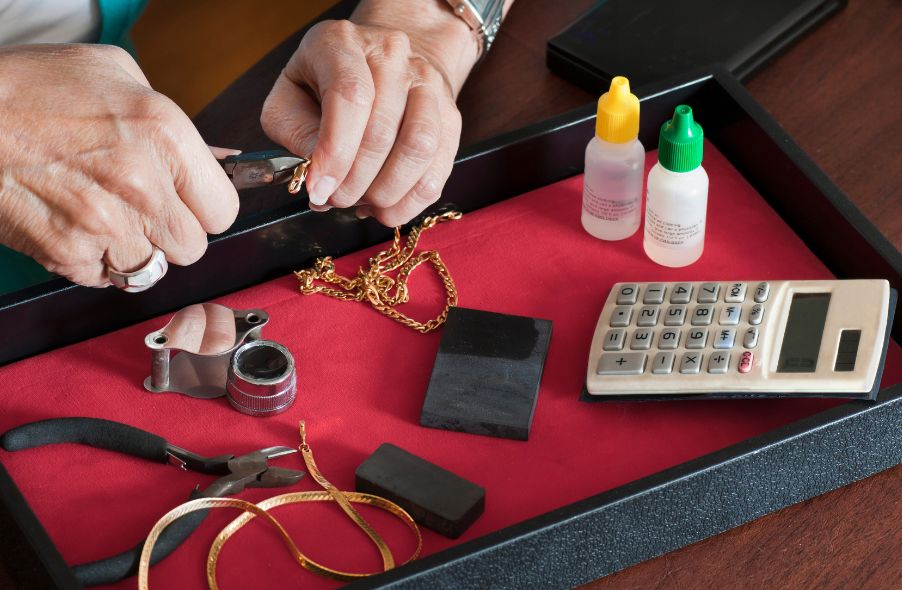
Chemical tests are highly reliable but can damage gold, so it’s best to use these methods only as a last resort.
Because gold is a noble metal, it will react to acid, oxidation, and corrosion. This makes nitric acid the perfect chemical for testing gold. Nitric acid is very dangerous, however, so always wear gloves and safety goggles when handling it. Only perform this test in a well-ventilated area, ideally with an open window.
To conduct this test, you’ll first need to buy a nitric acid test kit. Scratch the gold slightly with a sharp object, then apply a drop of nitric acid to the mark you made. You’ll have one of three results:
- No reaction: If the item doesn’t react at all, you have real gold.
- Strong reaction: If the acid bubbles, turns green, and gives off a lot of fumes, the item is probably made of copper.
- Mild reaction: If the item turns black and gives off only some fumes, it contains low-purity gold.
Don’t want to buy a nitric acid test kit or mess with dangerous chemicals? You can also test an item’s authenticity with common white vinegar. To do it, just apply a drop of vinegar to the item. If it changes color, the gold is fake.
Electronic Testing
Electronic testers, such as the Sigma Metalytics scanner, provide the most accurate results out of all gold testing methods. Plus, electronic testing doesn’t damage gold, which makes it the go-to method for most professional evaluators.
These machines send electromagnetic waves through gold to analyze its resistance level. The test can tell you an item’s fineness and whether it’s a karat gold alloy (6K and above).
Many gold pieces contain a blend of gold, copper, and silver. Electronic testers have settings that can account for blended gold alloys and provide accurate results.
Professional Evaluation
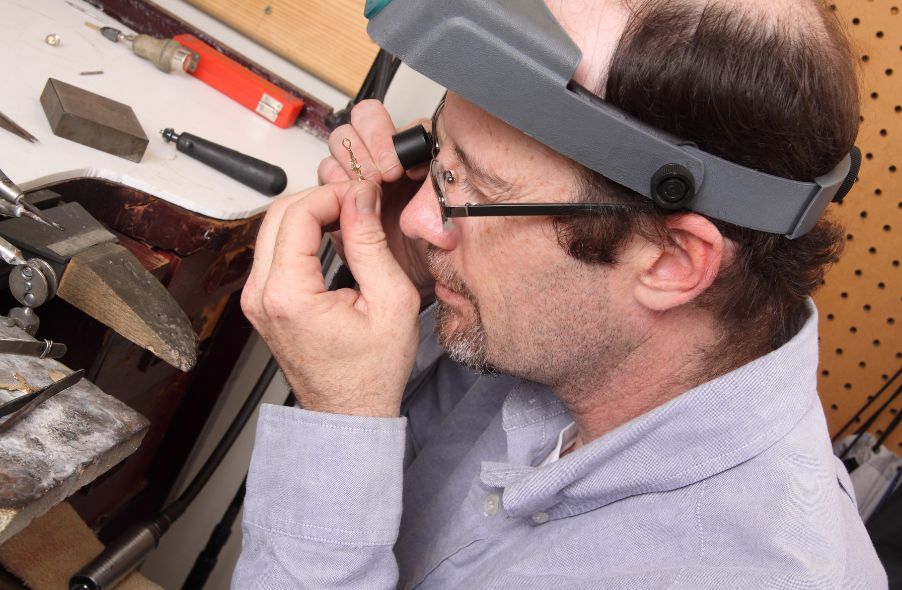
If you’re uncomfortable testing gold yourself, you may want to consider bringing it to a professional for evaluation. Jewelers and pawn shops may charge a small fee to test your gold, but the accurate results can be well worth the cost.
Fake Gold Indicators
Still unsure whether your gold is the real deal? Look out for the following indicators of fake gold:
- The item leaves black or green marks when rubbed against your skin
- The item floats in water
- The item is attracted to magnets
- The item makes a dull sound when struck
- The item reacts to a nitric acid test
Best Methods for Accuracy
The nitric acid test is one of the most accurate tests for determining whether gold is real or fake. However, it damages gold, which is why many professionals discourage its use. Using a gentler method, such as electronic testing, is far better. Determining your gold’s purity with an electronic tester is accurate and won’t damage your gold like nitric acid tests do.
Learn More About Investing in Gold
Curious about investing in gold after discovering how to tell if gold is real? Reach out to us and learn how to find a gold IRA partner today. We’ve researched dozens of gold IRA companies, so you don’t have to.
